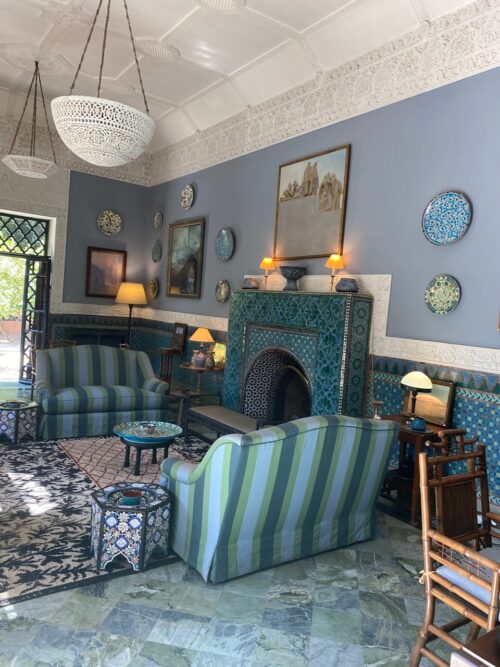
By Judy Carmack Bross

A 1965 Yves Saint Laurent Mondrian dress.
“Everything about his life was fashionable–his design, his interiors, his life style. Whom else could you be talking about but Yves Saint Laurent.”—Conery Hoffman, Director of Special Program at the Alliance Française de Chicago.
Following on their sparkling success with past Symposiums on the Arts of France, the Alliance Française de Chicago will present four lectures on Saint Laurent in English beginning April 10 at their Chicago headquarters. Chateaus, gardens, tastemakers and extraordinary women have been past subjects at these often sold out sessions, which Myriam Bransfield, Co-Chair with Mary Swift, says “focus on France as the epitome of the love of beauty, and the details to dress up life and make it beautiful.” Since 2011, Bransfield has worked closely with Hoffman on lush programs unique to Chicago.

Yves Saint Laurent’s and Pierre Bergé’s Marrakech home
Covering Saint Laurent’s homes, gardens fashion and jewelry, experts will illuminate Saint-Laurent’s style. For this article we spoke with the first two lecturers and will cover May and June lectures later this month.
 |
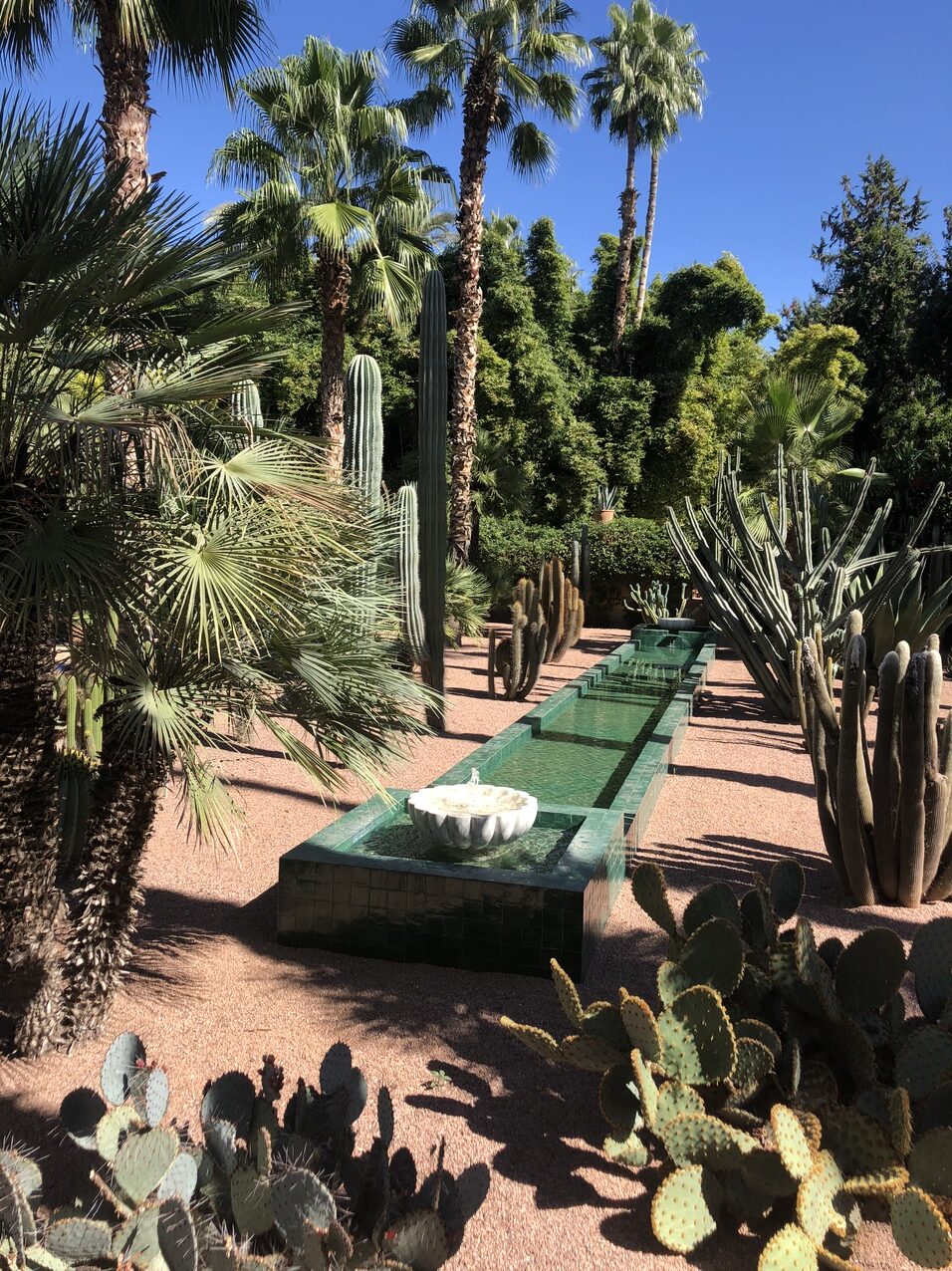 |
“His vision, shared by his life and business partner, Pierre Bergé, was a desire for beauty, rarity, even strangeness, to create private worlds where dreams were made real and popular taste was avoided,” Mitchell Owens tells us.
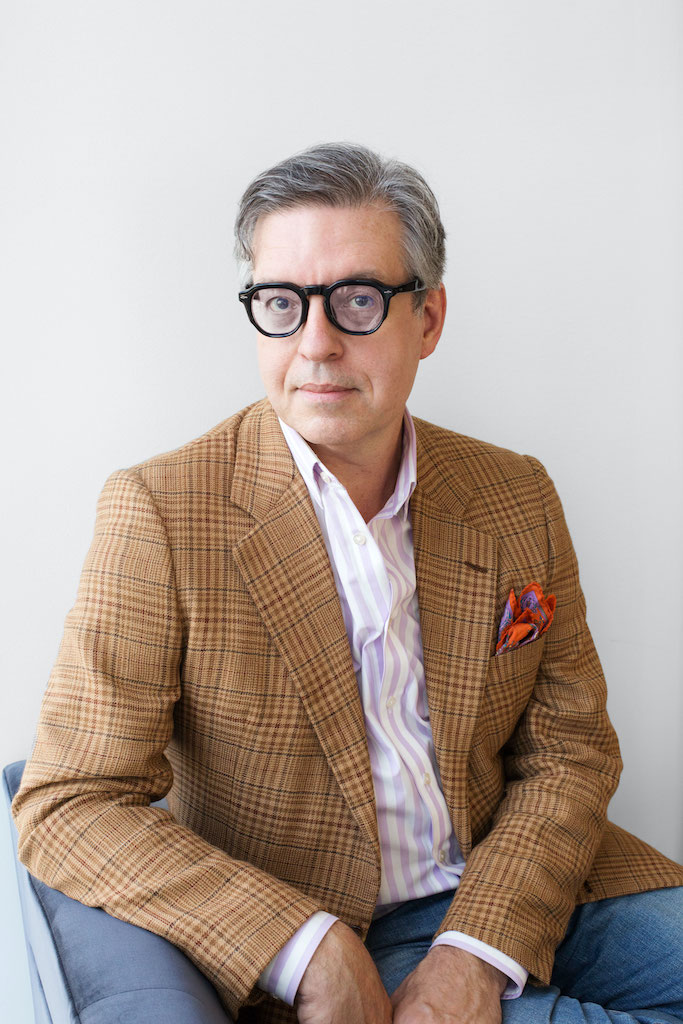
The American Editor of The World of Interiors, Owens will take participants on a virtual tour of the chimera-creating residences of Yves Saint Laurent and Pierre Bergé: the apartments, the houses, the collections, and the style on April 10.
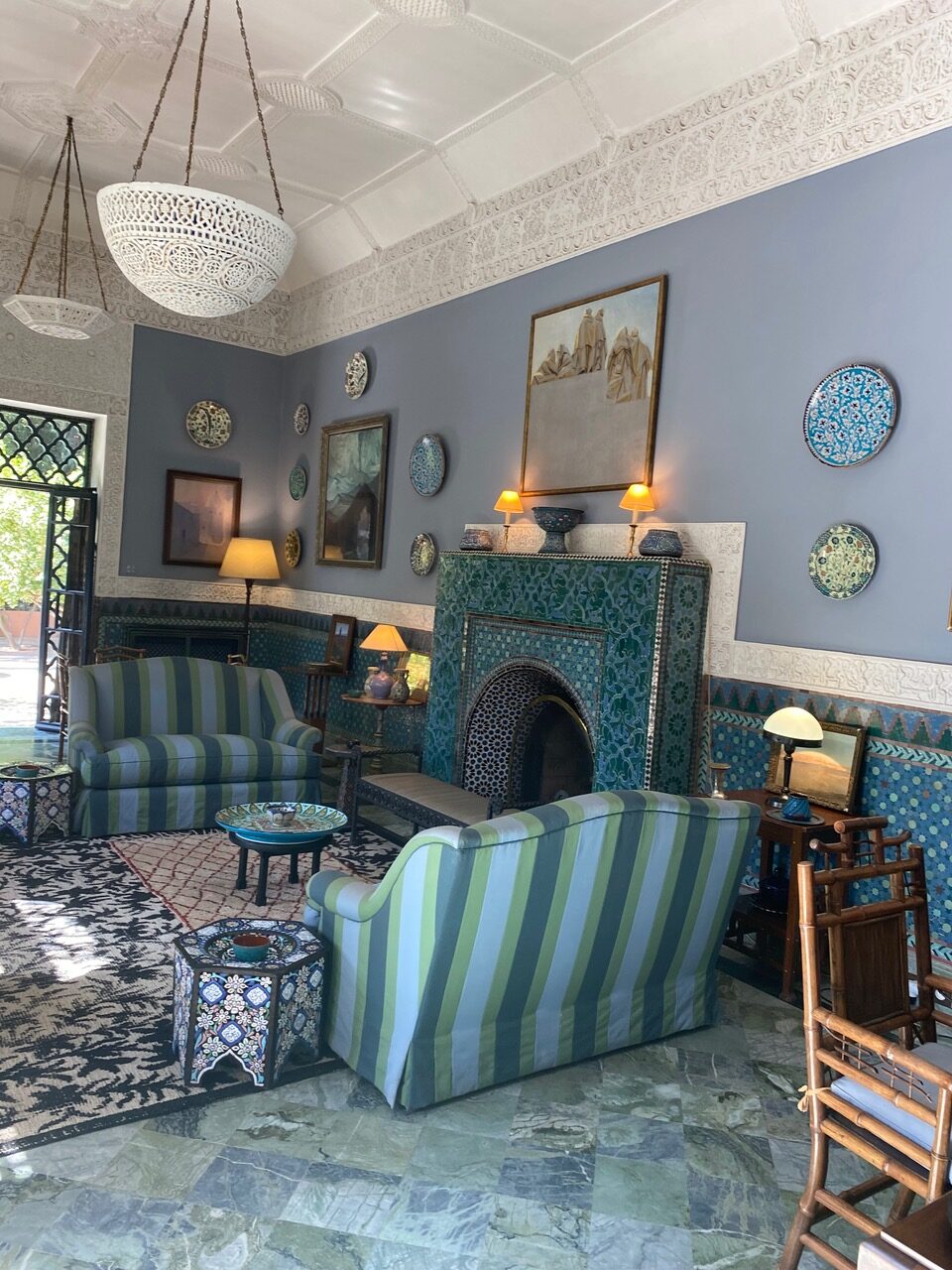
Villa Oasis, next door to Jardin Majorelle; built in the 1920s by and for artist Jacques Majorelle and purchased in 1980 by Bergé and Saint Laurent. “It would be their primary Marrakech residence for some years, where they entertained. The room is a garden-access sitting room that was added to the house by Marrakech architect Bill Willis,” Owens told us.
We asked Owens to tell us more:
CCM: You have spoken to us for past Symposium lectures and you know so much about your audience as well as the arts of France. Tell us a little about the vision Yves Saint Laurent exhibited as he told his story through his homes. What is some of the excitement that comes from seeing his interiors?
MO: The couple’s taste was extraordinarily small-c catholic, too, blending Art Deco, Moroccan, Russian, and African, along with reincarnations of the hothouse world of Belle Époque France as inspired by Marcel Proust’s novels. Not altogether in one room or one house, mind you, but those interests were themes that Saint Laurent and Bergé explored at their different residences.
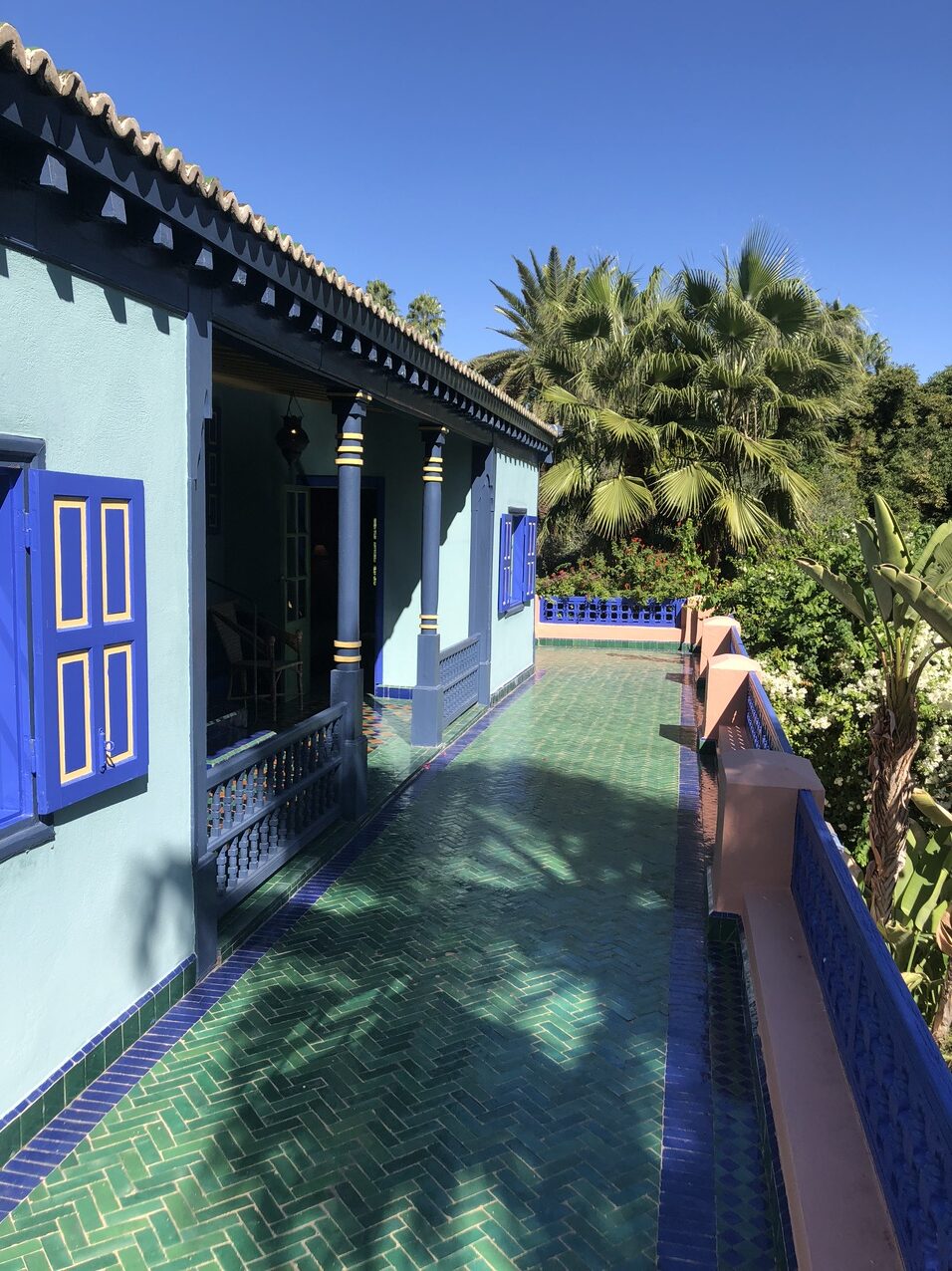
Marrakech home of Yves Saint Laurent
CCM: What was his life like in these houses, did he entertain much, find solace there, change the decor frequently?
MO: Saint Laurent and Bergé’s homes — which grew increasingly dense as art and objects took their fancy — were usually enlivened by the people who meant the most to them, members of an intense lifelong band of good friends, allies, and cohorts. Among them were the interior designer Jacques Grange, who helped to realize Saint Laurent and Berge’s dreams, and Saint Laurent muse Betty Catroux. But whether in Marrakech, Tangier, Normandy, or Paris, Saint Laurent’s residences were always conceived as escape hatches, where Saint Laurent could be immersed in beauty and reverence and contemplation, all on his own, without disturbances.

a Matisse that Yves Saint Laurent and Pierre Bergé had in their personal collection.
CCM: What do you think his houses tell us about him as a person?
MO: That he was a hopeless romantic. Each of Saint Laurent’s decors expressed another part of himself, as disparate as they were authentic, and often attuned to a particular period in the past. There he could escape from the pressures of daily life, opening a door and disappearing into a dream.
CCM: Through your extensive career and experience you have mastered so much about interior design, what do you think when you look at Saint Laurent’s homes and what truly entices you?
MO: His and Bergé’s prescience in embracing Art Deco at a time when it was just being rediscovered — and their fortune was being made — but before its prices reached stratospheric highs, hugely impresses me. I think about that often, and wonder what genres and periods are being undervalued or overlooked now and whether I can conjure up my own equally individual world with a similar passion.
CCM: Do themes from these magical places continue today?
MO: Romance and luxury are forever seductive; they never go out of style. And few interiors in recent memory embodied those characteristics more than Saint Laurent and Bergé’s. Few of us could ever afford even the smallest of their treasures, but the way the lived — the colors, the scents, the shapes, the patterns, the comforts, the cosseting — will continue to inspire.
CCM: Tell us a little about what you are doing now.
MO: For a bit more than two years, I have been the American Editor of The World of Interiors, a magazine that has been a particular lodestar since the early 1980s, when I was just beginning my career. I always fantasized about working there, and to my daily astonishment, I actually do.
A favorite Alliance Française lecturer, Owens is a Contributing Editor of AD, has written for The New York Times and other international publications and is the author of several books featuring dazzling interiors and elegant living.
Mary Ellen Connellan, Executive Director of the Alliance Française, told us more about the Symposium:
“If Spring is in the air, then the Symposium on the Arts of France is in full bloom. For over 20 years, the Symposium on the Arts of France has been the leader on the landscape of French Decorative Art, exploring what influences and fascinates us, be it a mistress, a king, a fashion icon, or an époque. This museum-quality lecture series organized by the Alliance Française de Chicago welcomes esteemed guests, international museum curators and historians to discuss the undeniably beautiful arts of France.
“It is a time-honored fundraising event that generates support for our cultural, educational and outreach programming each year vital for the continuation of the Alliance’s high quality content that our community has come to know and appreciate.
“I might add that we do this in a beautiful setting and encourage our guests to maximize the experience by joining us for an equally exquisite luncheon in our upstairs salon or courtyard garden. We welcome all enthusiasts of the Decorative Arts once again this season to marvel at the craftsmanship, artistry and beauty of penultimate masterpieces of the Arts of France.”
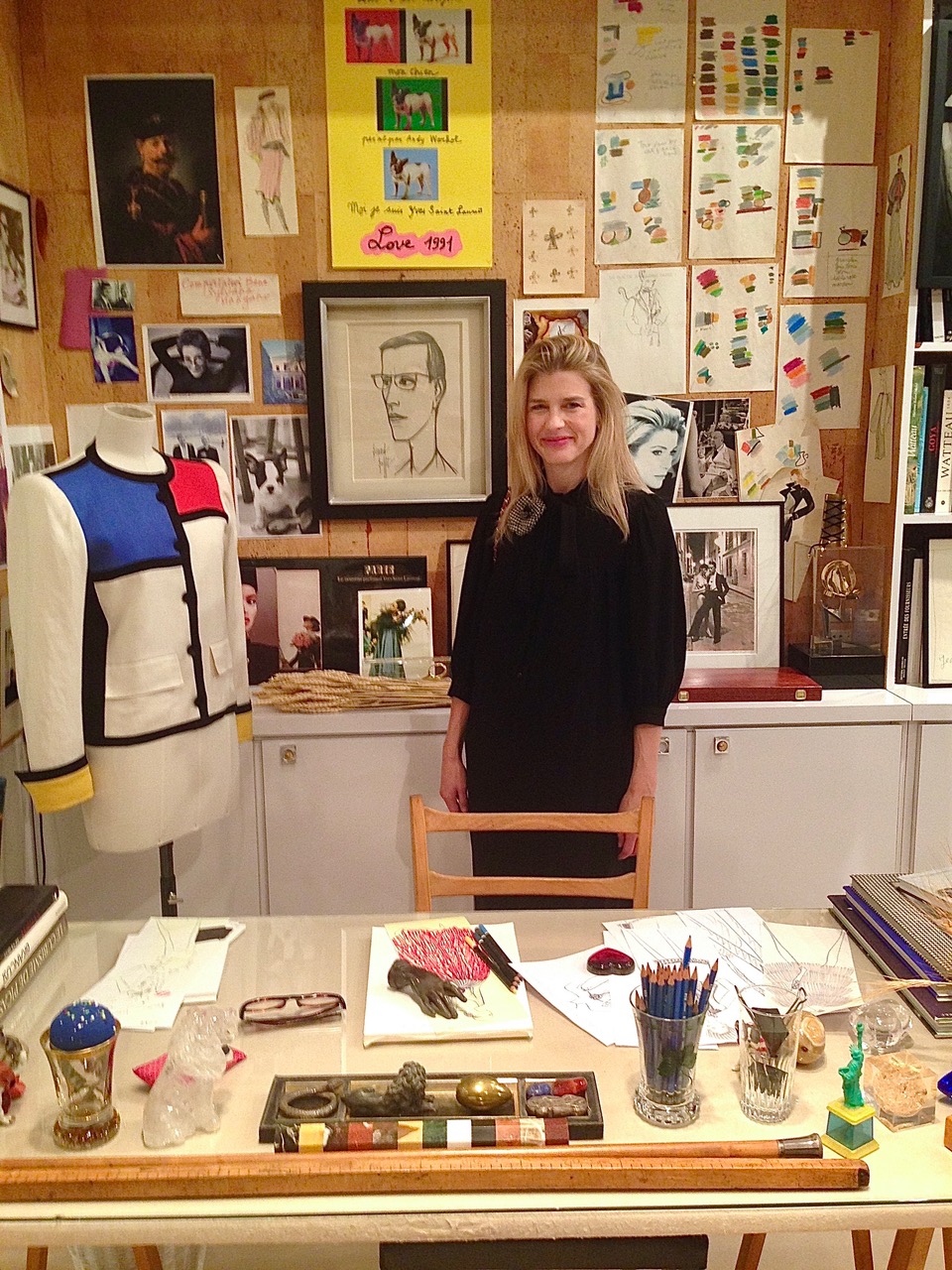
Stuart Dyer, in Yves Saint Laurent’s Paris studio, will speak April 17 at the Alliance.
Stuart Dyer, the founder of Ladybug Vintage LLC, a finely curated collection of high-end, vintage designer jewelry and accessories, will explore the inspirations behind the jewelry of Yves Saint Laurent, the talented ateliers who produced the jewelry and the influence of LouLou de la Falaise on the designs.
We asked Dyer, a contributing editor to Classic Chicago Magazine, to tell us more about his Saint Laurent’s jewelry.
CCM: What made you fall in love with it, and what makes it so very special?
SD: Yves Saint Laurent’s jewelry was beautifully made. He employed high-end jewelry manufactures to make it – the same ateliers that made jewelry for Chanel, Dior and other French fashion houses. What I love most about Yves Saint Laurent’s jewelry is that it was revolutionary for its time because it often mixed traditional jewelry materials such as metal and glass with natural materials such as wood, leather, rope, shell, coral and crystals. This was in contrast to the relatively stuffy jewelry designs that were coming out of Paris at that time.
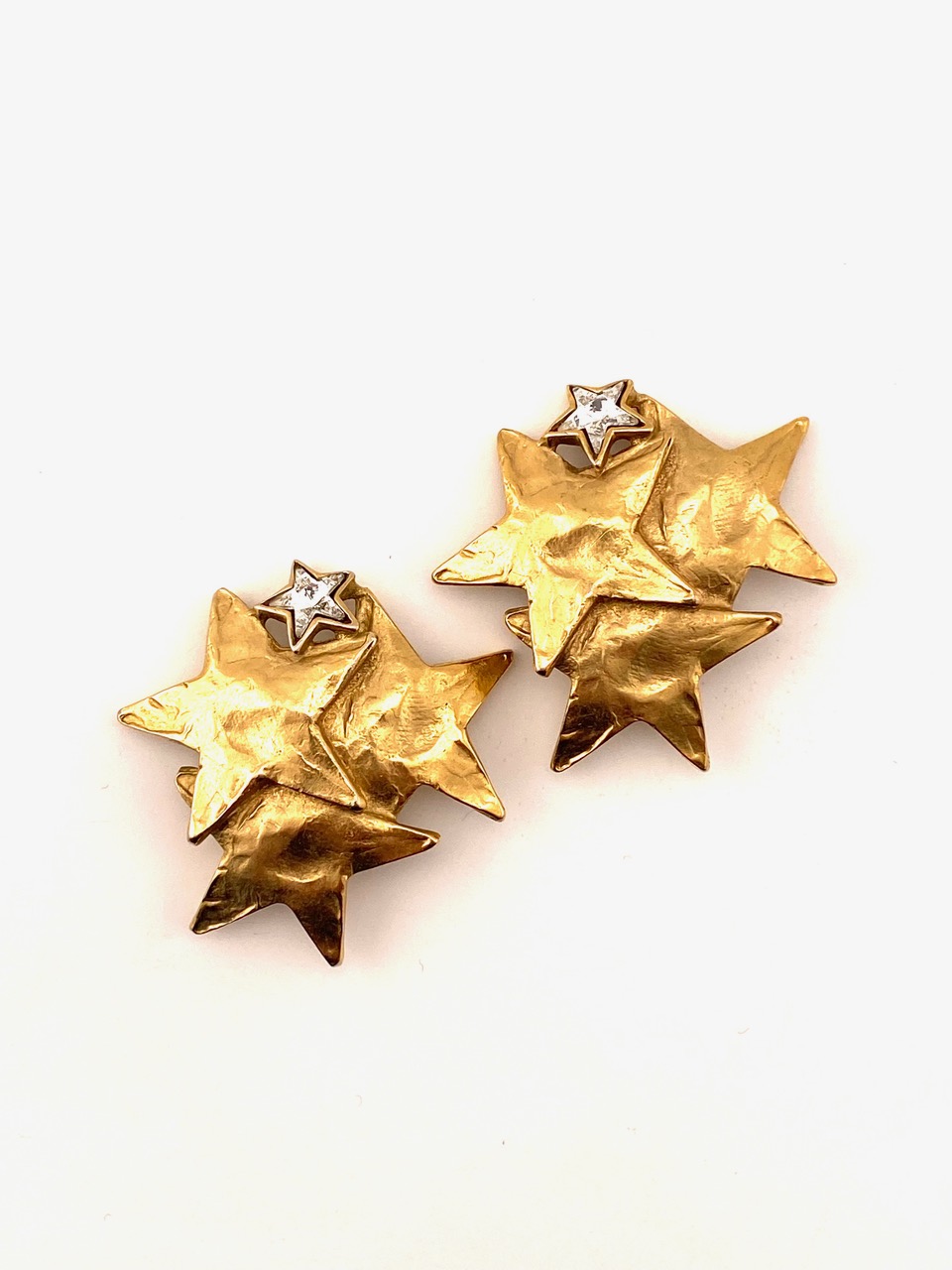
1980s Yves Saint Laurent Rive Gauche earrings
CCM: How does it incorporate with his fashion, did they both grow and change together?
SD: As Yves Saint Laurent’s clothing designs evolved, so did his jewelry designs. Both started out being ladylike in style but evolved through the 1970s into a more bohemian style. Yves Saint Laurent believed that jewelry brought whimsy and interest to the clothing that a woman wore. In 1977 he said, “One can never overstate the importance of accessories. They are what turns a dress into something else. I like dresses to be sober and accessories to be wild.”

1990s Yves Saint Laurent Rive Gauche brooch
CCM: Tell us a little about Ladybug Vintage and how Yves Saint Laurent fits into your collections.
SD: Ladybug Vintage focuses mostly on jewelry from the glamorous eras of the 1950s to the 1990s – whimsy, refinement and insouciance are the hallmarks of the Ladybug Vintage collection. Yves Saint Laurent’s beautifully made, bold, colorful and oftentimes whimsical jewelry fits in very well with Ladybug Vintage’s aesthetic.
CCM: Tell us one surprise that we might not know about his jewelry.
SD: A surprising detail is that in contrast to Yves Saint Laurent’s clothing designs, he produced very few drawings of jewelry. Rather he was dependent on the ateliers who specialized in making jewelry to translate his ideas into reality. In 1972 Loulou de la Falaise joined the Yves Saint Laurent company and took over the creative direction of the jewelry design.
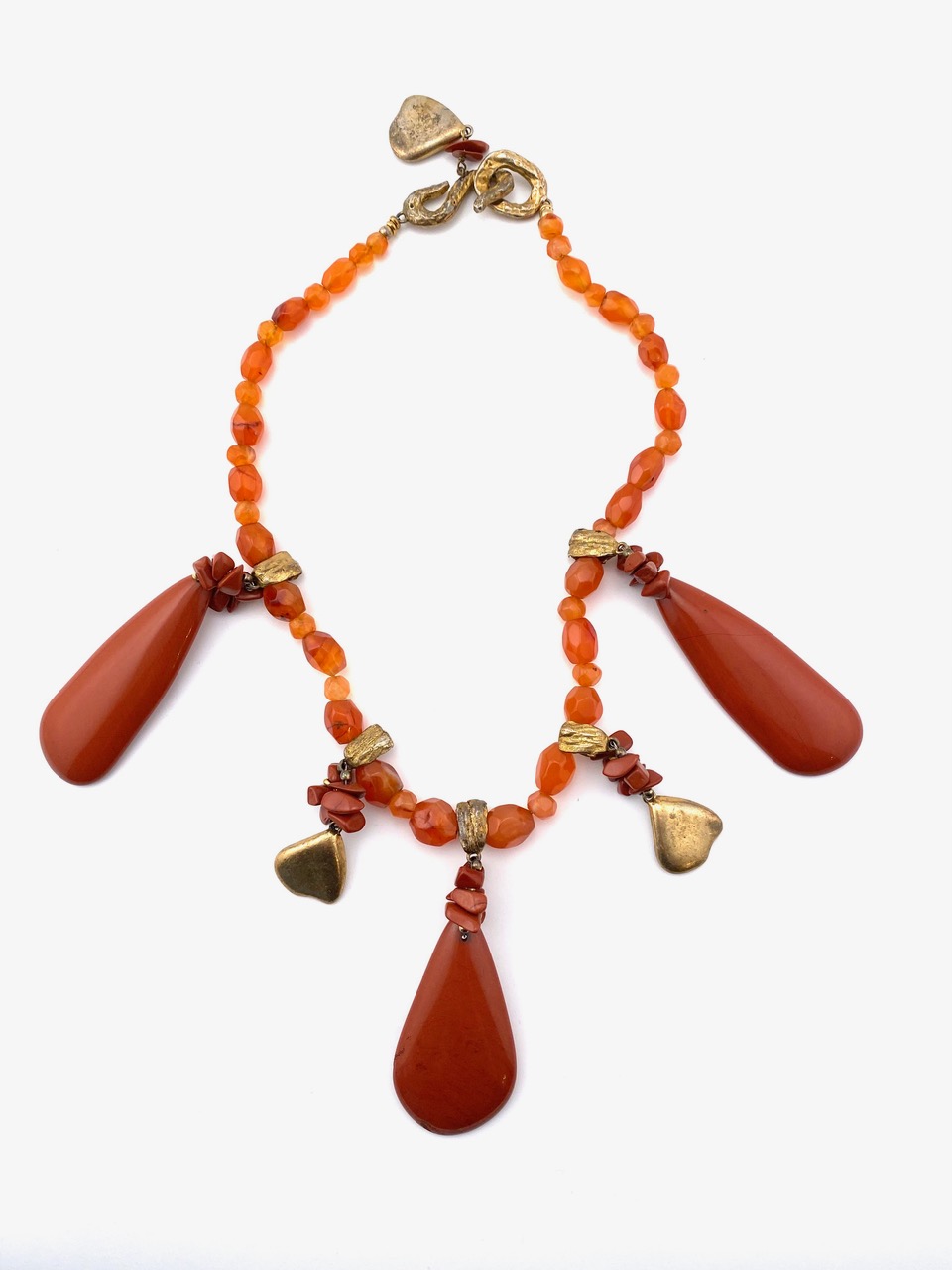
1970s Yves Saint Laurent Rive Gauche necklace
Launched in 2009, Ladybug Vintage blends Dyer’s lifelong passion for vintage with her expertise in the worlds of fashion and design. Ladybug Vintage pieces are worn by fashionable ladies all over the world and have been acquired by companies such as Gucci and Kenzo for their vintage archives.
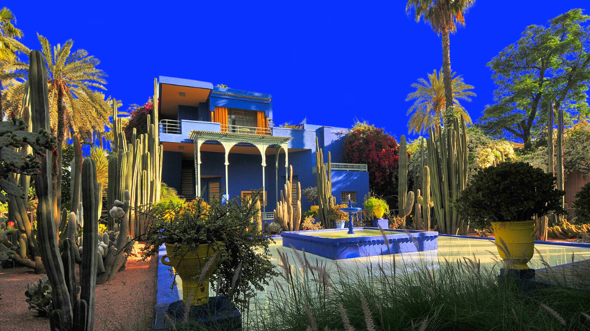
On May 15, Amanda Garfinkel, a specialist in contemporary fashion at the Costume Institute who has assisted on several exhibitions including Alexander McQueen: Savage Beauty
will speak on “The Style of Yves Saint Laurent”. On June 5, landscape architect Madison Cox will be in conversation with Mitchell Owens on the garden legacies of Yves Saint Laurent and Pierre Bergé, from Normandy to Marrakech and points beyond. In a future Classic Chicago issue we will learn more from Cox, creator of gardens in the United States, Europe and North Africa, successively responsible for the Majorelle Garden in Marrakech, director of the Saint Laurent Museums in Paris and Marrakech, and president of the Pierre Foundation Bergé – Yves Saint Laurent since the death of his husband Pierre Bergé in September 2017. He gained international renown and the media nicknamed him the “gardener of the billionaires” while noting that he did not seek advertising.
For further information on the Symposium on the Arts of France: Yves Saint Laurent visit af-chicago.org and see events.



